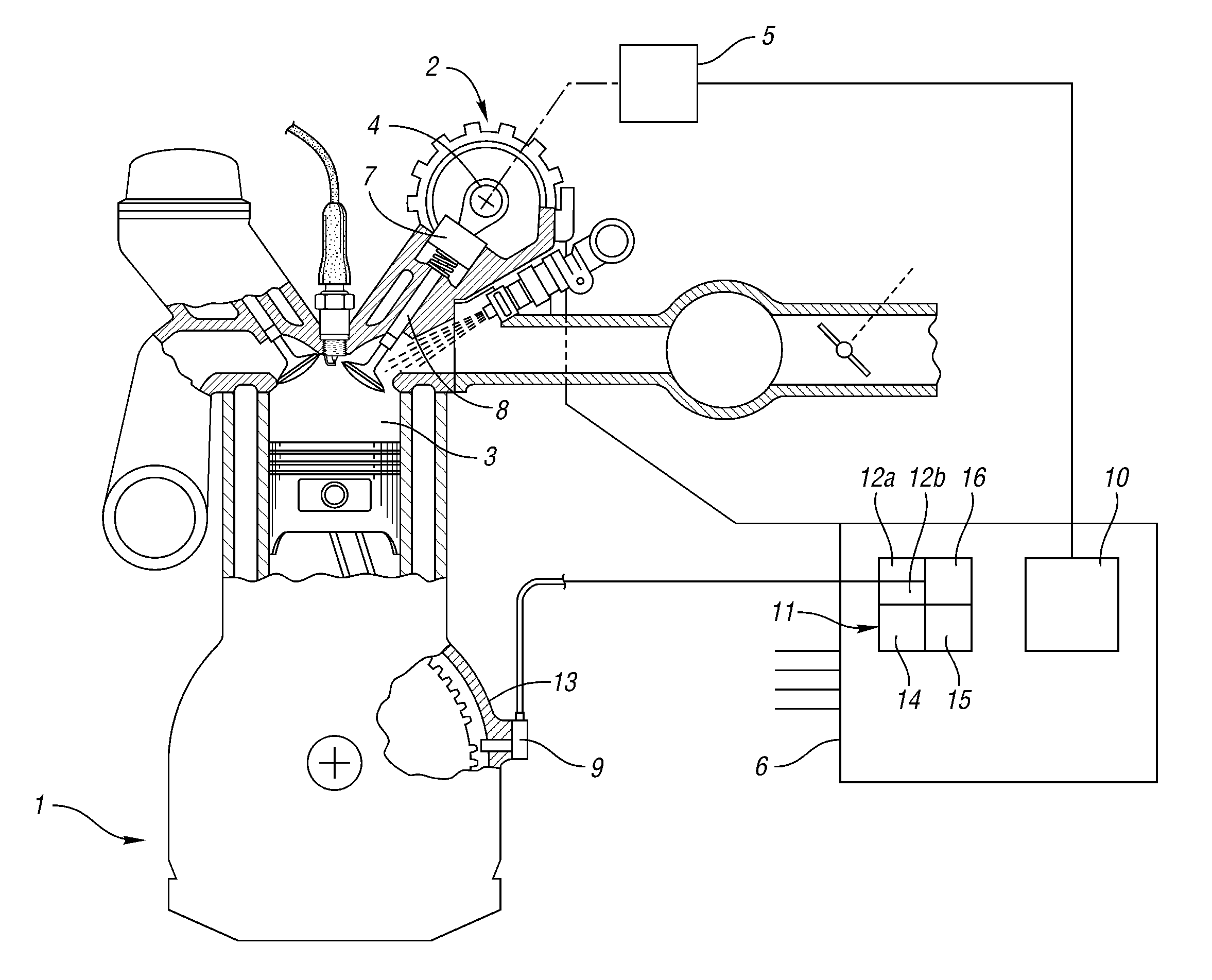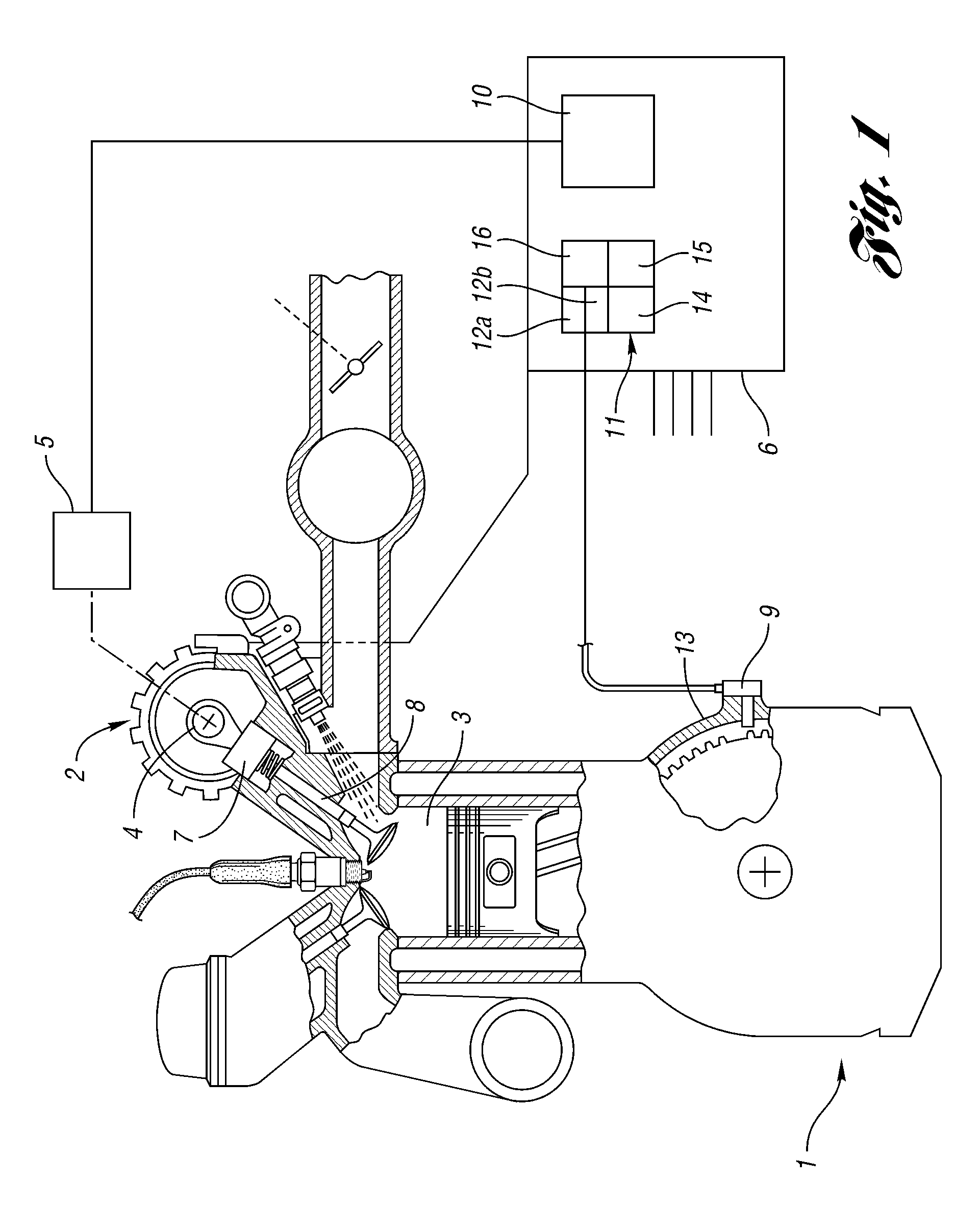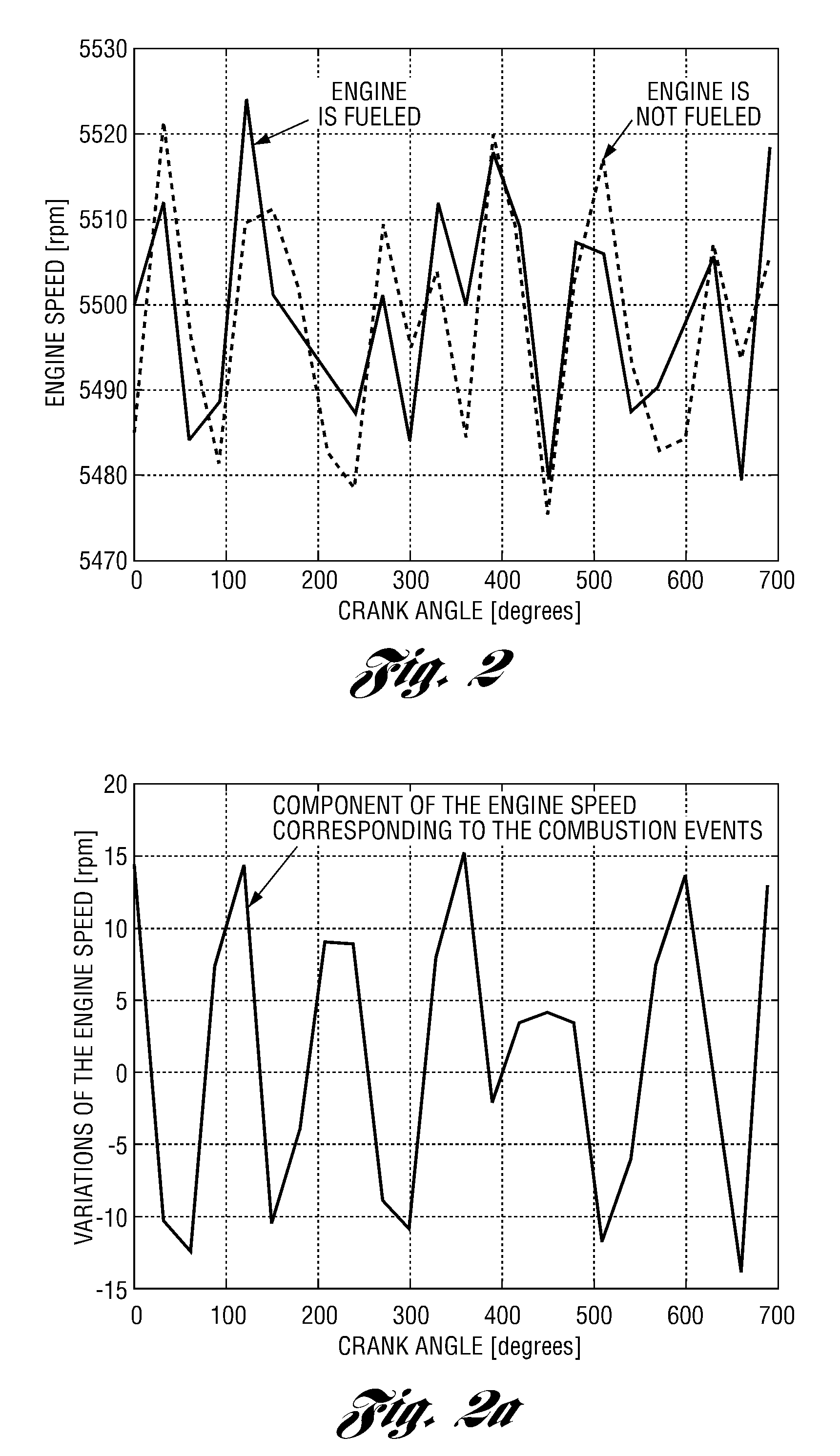Computationally efficient data-driven algorithms for engine friction torque estimation
a data-driven algorithm and engine technology, applied in the direction of machines/engines, electric control, instruments, etc., can solve the problems of increasing time interval errors, and achieve the effect of eliminating redundancy, avoiding unnecessary calculations, and being easy to establish
- Summary
- Abstract
- Description
- Claims
- Application Information
AI Technical Summary
Benefits of technology
Problems solved by technology
Method used
Image
Examples
Embodiment Construction
Estimation of Engine Losses During Fuel Cut-Off State
[0049]FIG. 1 shows in schematic form an internal combustion engine 1, which is provided with an evaluating device 11 for determining a variation of engine speed. The engine shown may be equipped with a variable valve control 2, although the invention can also be used on engines that do not have a variable valve control 2.
[0050]Evaluating device 11 receives from crankshaft sensor 9 a signal corresponding to the angular position of crankshaft 8. In one embodiment, this signal consists of a pulse train, with each pulse corresponding to a specific section of an angle swept by crankshaft 8. At a designated position 13 of the crankshaft, a specific pulse is generated that makes it possible to determine the absolute position of the crankshaft.
[0051]The evaluating device 11 includes means 12 for assigning a trigonometric polynomial representing the engine speed. The trigonometric polynomial is expressed as a set of trigonometric functions...
PUM
 Login to View More
Login to View More Abstract
Description
Claims
Application Information
 Login to View More
Login to View More - R&D
- Intellectual Property
- Life Sciences
- Materials
- Tech Scout
- Unparalleled Data Quality
- Higher Quality Content
- 60% Fewer Hallucinations
Browse by: Latest US Patents, China's latest patents, Technical Efficacy Thesaurus, Application Domain, Technology Topic, Popular Technical Reports.
© 2025 PatSnap. All rights reserved.Legal|Privacy policy|Modern Slavery Act Transparency Statement|Sitemap|About US| Contact US: help@patsnap.com



